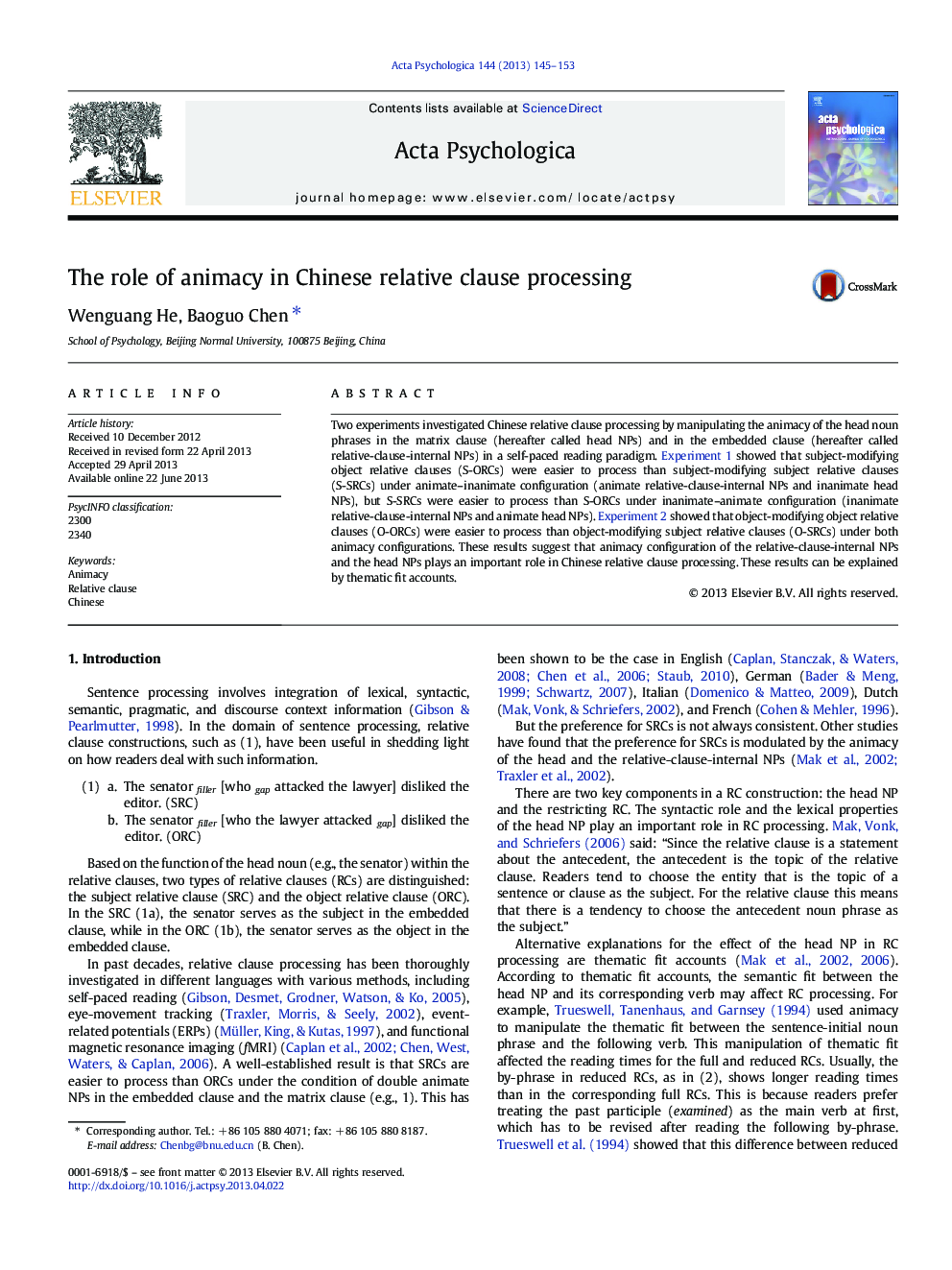| Article ID | Journal | Published Year | Pages | File Type |
|---|---|---|---|---|
| 919910 | Acta Psychologica | 2013 | 9 Pages |
•Animacy configuration of the NPs has an important role in Chinese RCs processing.•These results can be accounted by thematic fit accounts.•Experiment 2 shows that O-ORCs were easier to process than O-SRCs in all the conditions.
Two experiments investigated Chinese relative clause processing by manipulating the animacy of the head noun phrases in the matrix clause (hereafter called head NPs) and in the embedded clause (hereafter called relative-clause-internal NPs) in a self-paced reading paradigm. Experiment 1 showed that subject-modifying object relative clauses (S-ORCs) were easier to process than subject-modifying subject relative clauses (S-SRCs) under animate–inanimate configuration (animate relative-clause-internal NPs and inanimate head NPs), but S-SRCs were easier to process than S-ORCs under inanimate–animate configuration (inanimate relative-clause-internal NPs and animate head NPs). Experiment 2 showed that object-modifying object relative clauses (O-ORCs) were easier to process than object-modifying subject relative clauses (O-SRCs) under both animacy configurations. These results suggest that animacy configuration of the relative-clause-internal NPs and the head NPs plays an important role in Chinese relative clause processing. These results can be explained by thematic fit accounts.
